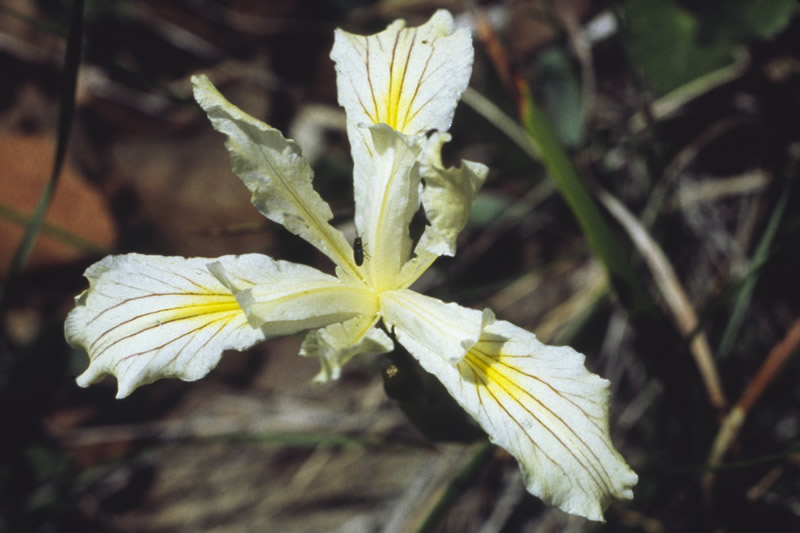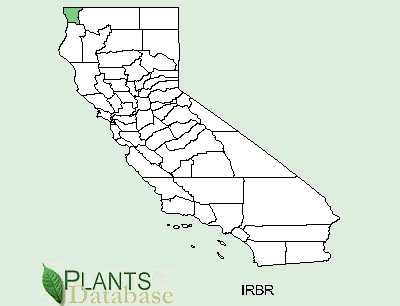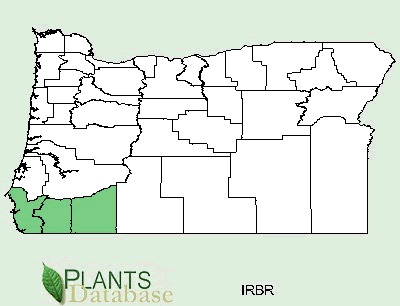Our Native Irises: Pacific Coast Irises
Iris bracteata: Siskiyou Iris
The Siskiyou iris occurs from northwestern California into southwestern Oregon in the Siskiyou mountains.
Iris bracteata has large golden yellow or creamy white flowers. The sepals are widely spreading and arching downward with prominent purple to reddish-brown veins. The signal is deeper yellow. The petals are the same color as the sepals but with lighter colored veins, and are upright, longer, and narrower than the sepals. The inflorescence has one to two flowers, the flowering stalk shorter than the attending leaves. The leaves are dark green on one side and yellowish-green on the other. They are upright, slightly reflexed, basal with a pink to red base, from branching rhizomes with few roots, and occur in small, compact clumps.
 A yellow form of Iris bracteata, with prominent purple veins that serve has a pollinator guide. Photo © Kenneth Walker, courtesy Society for Pacific Coast Native Iris.
A yellow form of Iris bracteata, with prominent purple veins that serve has a pollinator guide. Photo © Kenneth Walker, courtesy Society for Pacific Coast Native Iris.
 A creamy white color form of Iris bracteata with prominent pale purple veins and a bright yellow signal patch that guide pollinators into the flower. Photo © Ferrel, courtesy Society for Pacific Coast Native Iris.
A creamy white color form of Iris bracteata with prominent pale purple veins and a bright yellow signal patch that guide pollinators into the flower. Photo © Ferrel, courtesy Society for Pacific Coast Native Iris.
Iris bracteata is found growing in sunny to shady areas in dry pine forests or in sunny in meadow openings.
 An open sunny meadow habitat for Iris bracteata. Photo © Lennette, courtesy Society for Pacific Coast Native Iris.
An open sunny meadow habitat for Iris bracteata. Photo © Lennette, courtesy Society for Pacific Coast Native Iris.




